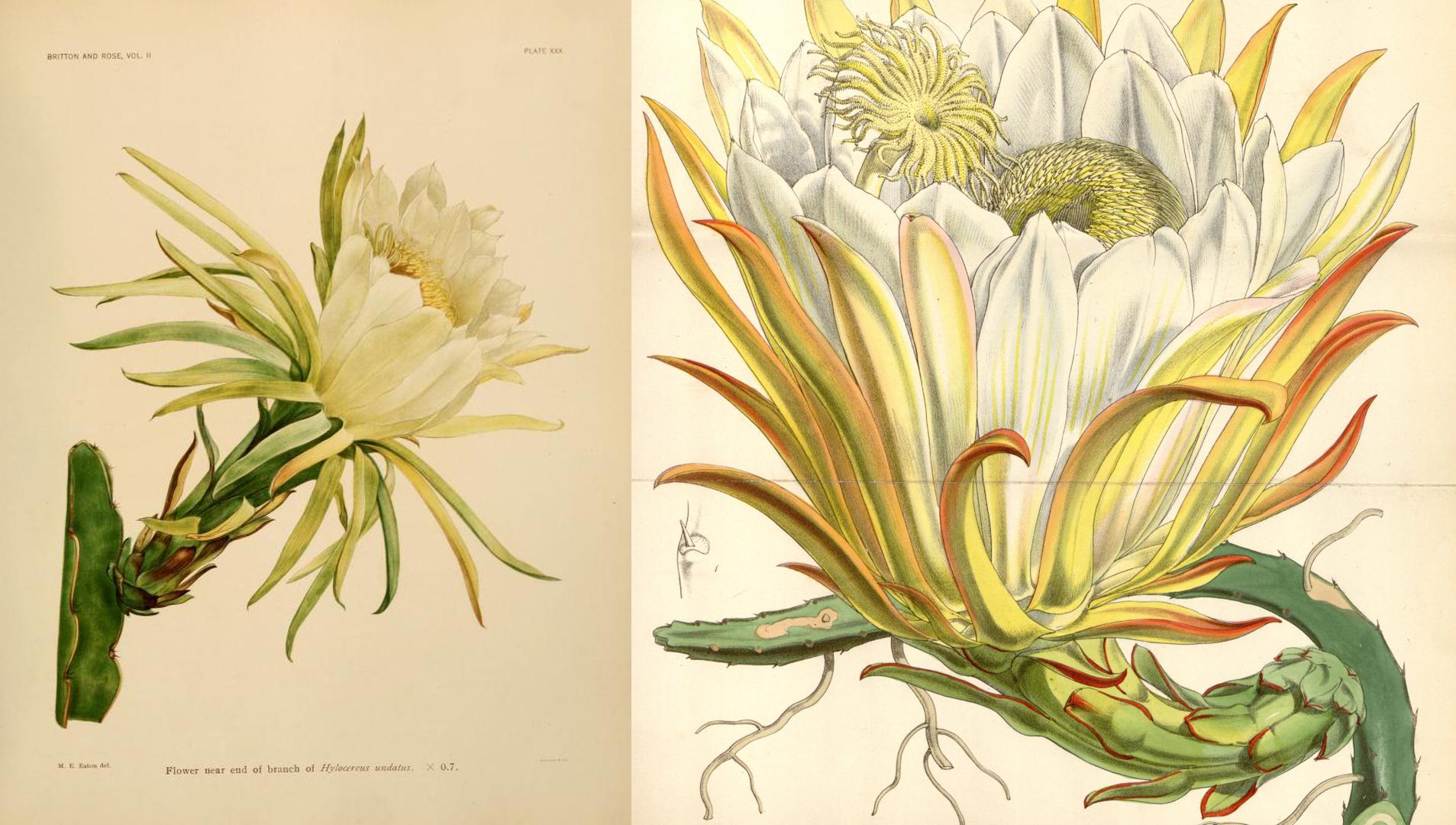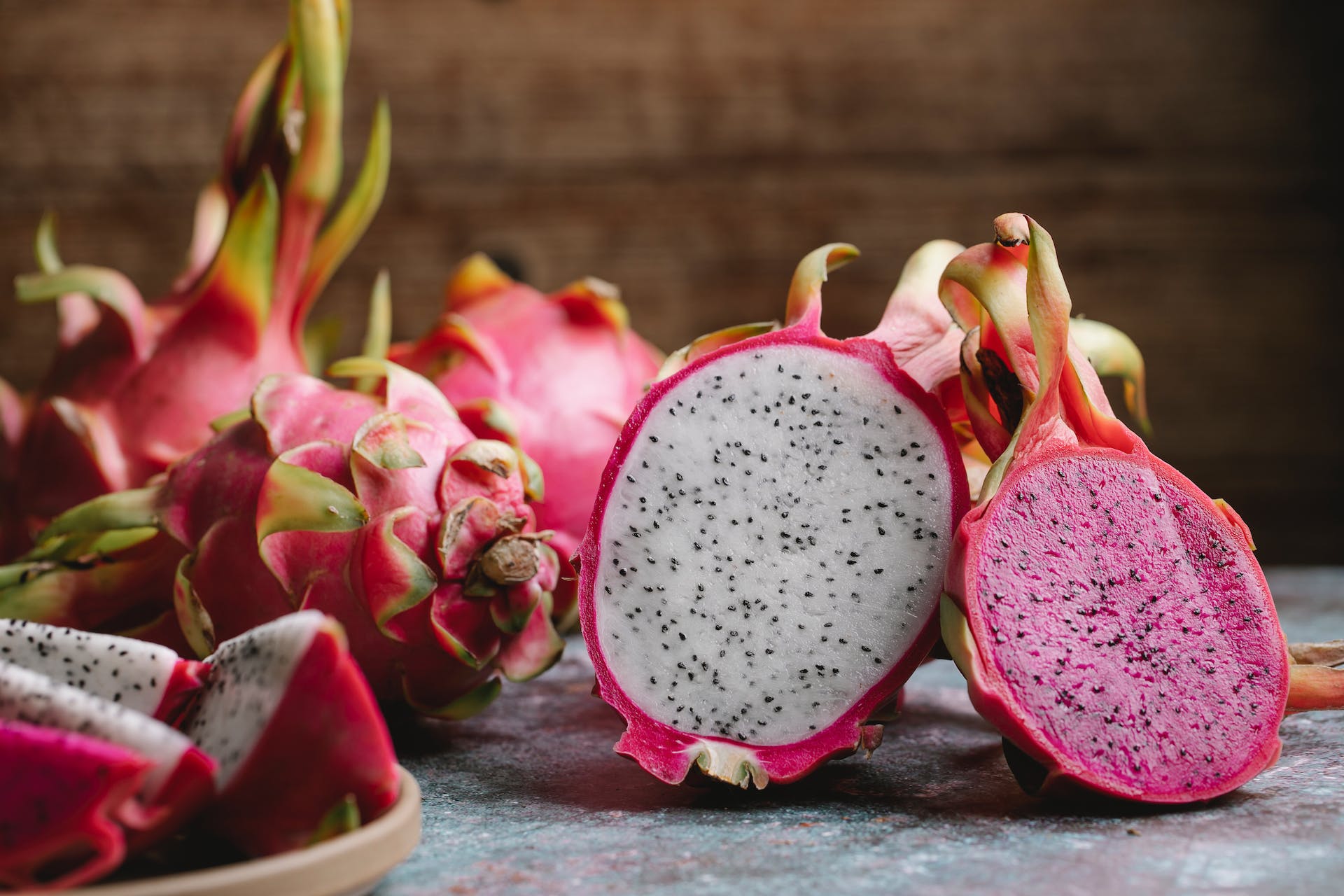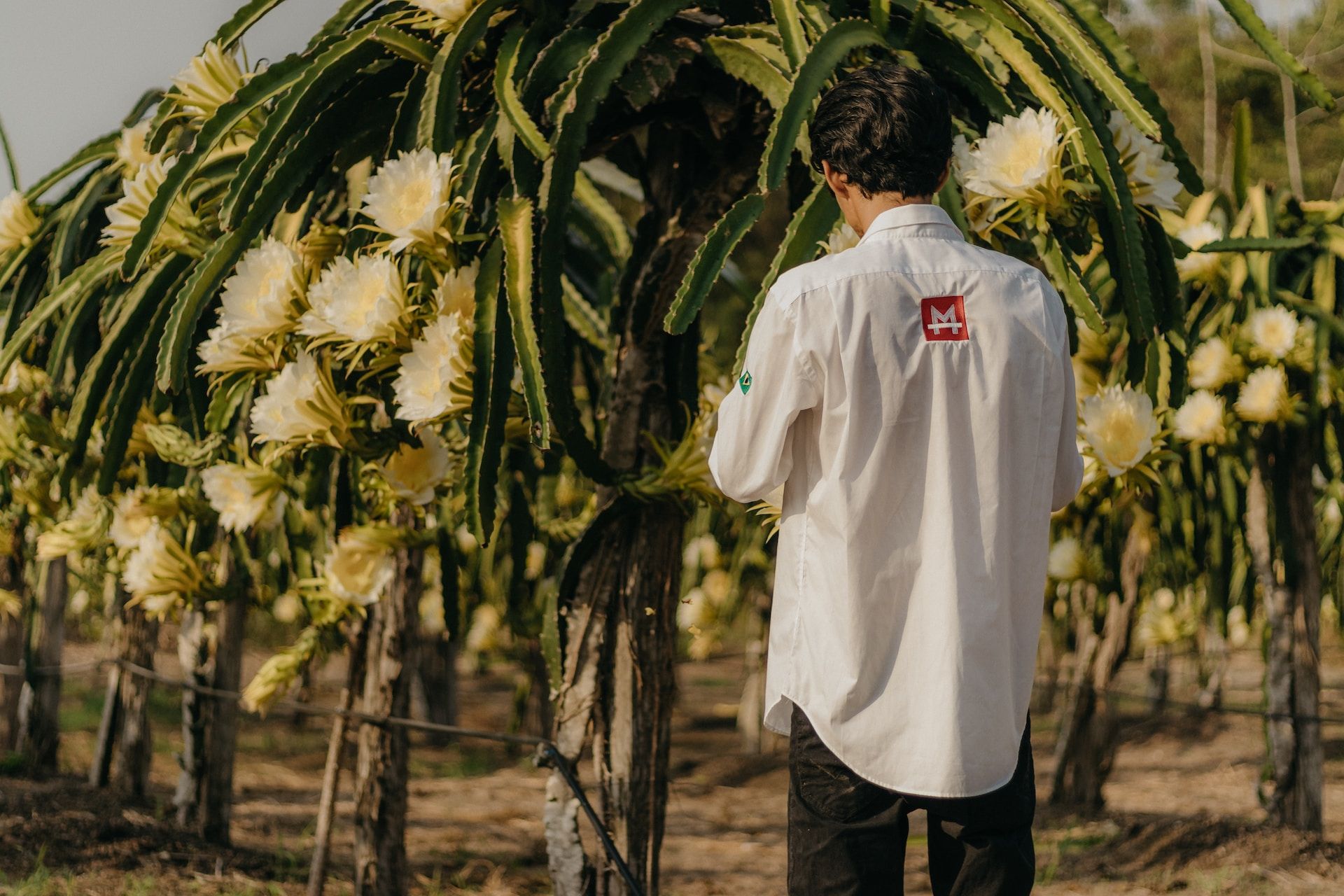
5 mins read
Dragon Fruit: A Brief History of a Mystic Fruit
Although there are thousands of beautiful fruits, the pitahaya stands out with its vibrant colors and unique shapes. But beyond its flamboyant appearance lies a story that transcends time and geography.
Originating from the lush landscapes of Central America, the dragon fruit, or pitahaya, has journeyed across oceans and cultures, transforming from a mysterious tropical delicacy to a symbol of culinary exoticism and health. This article explores the history, evolution, cultural significance, and more about dragon fruit.
Curious? Join me as we delve into the heart of this mystic fruit!
Origins and History: Unearthing the Dragon Fruit's Past
The story of the dragon fruit, often as enigmatic as the fruit itself, begins in the heart of Central America. Known scientifically as Hylocereus Undatus, this fruit has piqued the curiosity of many people. How did a fruit so striking in its appearance, with its vivid pink skin and speckled flesh, come to be?
The Hylocereus Undatus, commonly known as dragon fruit or pitahaya, was first propagated and cultivated by birds and humans for its edible fruits in many tropical regions of the Americas and the Caribbean during pre-Columbian times. Then, the Spanish introduced this exotic fruit into the Philipines between 1500 and 1600. In 1645, China was able to start cultivating pitahaya; around 1860, it was Indochina's turn to be introduced to this fruit with the help of the French. Today, Hylocereus Undatus is a common crop throughout Southeast Asia. It can also be frequently found in other parts of the world, like California. But in some prosperous regions, the cactus grows out of control and becomes invasive.
 The image on the left is taken from the book ''The Cactaceae: descriptions and illustrations of plants of the cactus family'', the image on the right is from the University of Oxford
The image on the left is taken from the book ''The Cactaceae: descriptions and illustrations of plants of the cactus family'', the image on the right is from the University of Oxford
Introduced by a human for its taste, it is difficult to find the reason behind the name ''dragon fruit''. You can find some answers to legends and myths about a dragon protecting this fruit from other creatures or simply by the prominent scaly spikes on the fruit's skin, which looks like the skin of a dragon.
Historically, the dragon fruit's journey is a tale of natural wonder and human curiosity; it found its way across the oceans with early explorers and traders. In many new lands, the dragon fruit adapted, thrived, and became a part of the locals.
But the dragon fruit's story is not just about its past. As we delve deeper, we find its present and future are equally compelling. The following section will explore the fruit's cultivation and production, where tradition meets technology.
Cultivation and Production: The Journey from Seed to Supermarket
The cultivation of dragon fruit is a testament to human ingenuity and adaptation. Thriving in climates ranging from the tropical to the subtropical, the pitahaya plant, a species of cacti known as Hylocereus, demands specific conditions to bear its fruit. It revels in well-drained soil, ample sunlight, and not too much water. But it is a species also resistant to drought due to crassulacean acid metabolism. It can grow in tropical dry forests, lowland deciduous forests, and various disturbed areas, including rocky terrain, roadsides, and maritime scrub.
 Image from Unsplash
Image from Unsplash
The production of dragon fruit is a combination of patience and precision. Farmers often rely on hand pollination to ensure fruiting, a delicate process usually done under the veil of night. Often called the "moonflower," pitahaya flowers bloom in the cool of the night. This nocturnal blooming adds a layer of care to its cultivation; the lack of nocturne pollinizers can explain it.
From these nocturnal blooms, the fruit takes 16 to 45 days to mature. The harvest time depends on the variety, the region, the seasons, and the distance it needs to travel to customers. The harvesting, often done by hand, ensures that each piece reaches consumers in its prime state – an echo of the care and attention of growers.
The global production of dragon fruit has seen a remarkable surge, particularly in countries like Vietnam, Thailand, and Israel. With many varieties and possibilities, the pitahaya enters markets worldwide!
Varieties and Culinary Delights: A Spectrum of Flavors
We often picture the vibrant pink skin and white flesh variety when we think about dragon fruit. In reality, there are more than 100 varieties of pitahaya, each varying in flavor, color, texture, etc.
As we explored previously, this exotic fruit can thrive in many environments, and by adapting to new surroundings, the dragon fruit can produce a new variety. Humans, too, can create varieties of the pitahaya. It can be done to improve the resistance to colder climates, the taste, the conservation, and the appearance.
 Image from Pexels
Image from Pexels
The pitahaya fruit is incredibly versatile and can be used in a wide range of sweet and savory dishes. From smoothies and desserts to salads and drinks, there are countless ways to incorporate this delicious fruit into your meals. It's a popular street food in Vietnam and Thailand, often served with a sprinkle of spice or blended into iced cream rolls. Dragon fruit is also great for infusing water, cocktails, and teas with its subtle and delicate flavor. With so many culinary possibilities, the sky's the limit when cooking with this fantastic fruit.
In addition to being delicious, the pitahaya is also a trove of health benefits, which we will explore in the next section. From its nutrient-rich profile to its medicinal uses, the dragon fruit continues to surprise and delight me!
Cultivating Wellness: The Health Benefits and Uses of Dragon Fruit
Dragon fruit is not just a pretty; it's a nutritional powerhouse! With high levels of antioxidants, vitamins, and fiber, it's the perfect choice for health enthusiasts. In addition, its high vitamin C content helps boost the immune system, and its fiber content aids digestion, making it an incredibly beneficial option in your alimentation.
Beyond its consumption as a fresh fruit, the dragon fruit finds its way into various health-oriented products. Its extract is used in supplements and skin-care products, capitalizing on its antioxidant properties. The seeds, rich in omega-3 and omega-6 fatty acids, are gaining attention for their potential in promoting heart health.
Dragon fruit has health benefits, but there are challenges in its cultivation and distribution. The following section will explore these hurdles and ponder its future.
Facing the Future: The Challenges and Potentials
As we approach the final chapter in the story of the dragon fruit, we face various challenges and opportunities. These factors paint a complex picture of the fruit's future. However, popular in global markets, sustainable and innovative practices are necessary to overcome hurdles.
 Image from Unsplash
Image from Unsplash
Like other vegetal, the cultivation of dragon fruit is not immune to the harshness of nature. Climate change poses a significant threat, with erratic weather patterns potentially impacting the growth and yield of dragon fruit plants. These challenges call for adaptive agricultural practices, including developing more resilient varieties and implementing innovative farming techniques to minimize environmental impacts.
Looking ahead, the future of dragon fruit cultivation lies in embracing technological advancements. From precision agriculture employing drones and AI, technology could play a pivotal role in the production of pitahaya.
The horizons are vast, and there is real potential in exploring underutilized varieties, experimenting with new culinary uses, and tapping into unexplored markets.
Conclusion: The Dragon Fruit's Continuing Saga
As we reach the end of our journey through the vibrant world of the pitahaya, it's clear that this fruit is much more than a visual delight. From its mysterious origins in Central America to its widespread cultivation across continents, the dragon fruit has woven a tapestry rich with cultural, nutritional, and economic threads.
The dragon fruit's journey is a story of resilience, curiosity, and exploration. Looking ahead, pitahaya will continue to evolve and adapt, offering new flavors and expanding accessibility to colder climates.
Resources
USDA Ecuador Dragon Fruit, Yellow Dragon Fruit, Pitahaya, and Pitaya Fruit Admissible to Continental United States
University of Hawaiʻi Pitaya (Dragon Fruit, Strawberry Pear, Panini-o-ka-punahou, Papipi pua)
University of Oxford Hylocereus undatus (Haw.) Britton & Rose (Cactaceae)
CABI Digital Library Hylocereus undatus (dragon fruit)
Biodiversity Heritage Library The Cactaceae: descriptions and illustrations of plants of the cactus family

